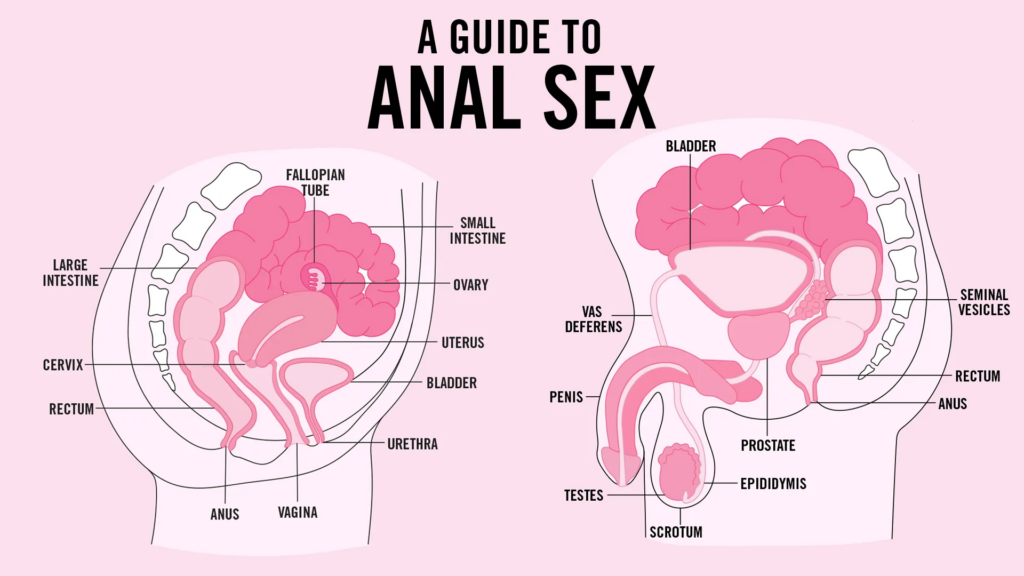Teen Vogue’s Ripple Effect

For a positive change in anal sex education, an alliance between academic research and popular media may be the partnership we need.
Published in 2019, the controversial article by Gigi Engle in Teen Vogue, titled “Anal Sex: Safety, How to’s, Tips and More”, serves as a monumental example of how these two entities impact each other. Engle’s work not only provided relevant information on a sensitive topic. It pushes the discussion to extend beyond the boundaries of mainstream media.
This article set the stage for more in-depth academic studies. Such as “A Qualitative Exploration of Perceptions of Anal Sex: Implications for Sex Education and Sexual Health Services in England” by Professor of Sexualities & Sexual Health, Julia Hirst Ph.D., Dr. James Pickles, Dr. Megan Kenny, Dr. Ruth Beresford, and Doctoral Researcher, Chloe Froggatt.
Published in 2022, the research aims to enhance sexual health education and services, specifically for young women. It examines the complex perceptions of anal sex, emphasizing its significant impact on sex education and health services in England. This research stresses the importance of creating open discussion about young women’s perspectives on anal sex. Noting the need for a more comprehensive understanding of this sexual activity.
History Behind Anal Sex Perception
A multitude of sociocultural beliefs and norms influence views on anal sex. As explored by Julia Hirst et al., the opinion of anal sex as perverse or deviant is far from new but rather has deep historical roots. It’s shaped by monotheist religions, which traditionally prohibit anal sex or treat it as immoral.
Throughout the ages, these moral and religious doctrines have had a significant impact on cultural ideas surrounding anal sex. Often labeling it as a transgressive sexual practice, outside the parameters of ‘acceptable’ sexual behavior. Over time, anal sex became mostly seen as a health risk, a moral transgression, or a taboo topic seldom talked about openly.
The study reveals societal positions towards anal sex can be frequently characterized by notions of “dirtiness, disgust, amorality, disapproval, and damage.”
Understanding this historical context is essential for understanding the modern attitudes toward anal sex.
Assumptions About Anal Sex
The discussions surrounding anal sex have been profoundly shaped by androcentrism and phallocentrism. That is, focusing on the male perspective and penis.
The study indicates the dominant narrative around anal sex mostly focuses on penile penetration. This perspective is not only a physiological observation. Still, it shows a broader cultural emphasis on male sexuality and male pleasure. Thus, overlooking the experiences and sexual preferences of women and non-heteronormative relationships.

A penile-focused perspective in understanding sexual experiences usually emphasizes the male point of view. Relegating the female or receiving partner’s role to lesser importance. This approach limits science and knowledge of sexual behavior.
This perspective can further influence how we address sex education. Such as, often missing out on critical topics related to sexual practices and anal sex, like consent, pleasure, and safety – of everyone involved.
A New Angle on Pleasure
The research methodology behind the 2022 Academic Study involved focus groups and individual interviews with sexual health practitioners and young people. The study sample comprised 20 participants, including 16 women and 4 men, with diverse sexual orientations and racial backgrounds. They were primarily from metropolitan cities in England.
As the article shares, “discussion took place concerning why people engage in anal sex and who instigates it” leading to “examples of anal sex being seen as a pleasurable choice.”
For instance, one participant noted,
“It can be enjoyable for many people. Point blank, that’s why people do it. Why do people have sex in general? Because it’s enjoyable.”
This interpretation is valuable because it moves away from the andro/phallocentric lens. Instead, it approaches anal sex as a sexual practice in which anyone, regardless of their gender, can find satisfaction. It embraces anal sex as a consensual and enjoyable experience for many.
Recognizing the impact of individual choice and pleasure could provide more effective and empathetic communication about sexual health. Further moving us beyond misconceptions and stereotypes.
Reshaping Social Perceptions
The bidirectional influence of social media and pop culture on anal sex is also important to consider. Media plays a role in shaping public opinion and conversation surrounding this topic. As the research noted, there was a “media furor around this topic… emphasizing the ‘disturbing’ and ‘shocking’ nature of young women’s anal sex participation.” This type of sensationalized portrayal often perpetuates a negative and lurid portrait of anal sex, specifically in the context of women’s involvement.
Such representations in media not only advance the stigma surrounding anal sex but also reinforce moral judgments and gendered stereotypes. The depiction of anal sex in social media tends to be skew towards either overly sexual or as a deviant act. It rarely gives a balanced or educational angle. Given the lack of sex education in many parts of the world, this can contribute to misconceptions among young people. Since they often turn to media and social platforms for information on sexual practices.

The need for reliable media literacy and responsible consumption of such content becomes highly apparent, as does the need for informative representation. By comprehending the power of media in shaping (and being shaped by) our societal thoughts and pushing for global access to comprehensive sex education, there’s an opportunity to change the narrative around anal sex from one of shock and taboo to be more open, respectful, and informed.
Anal Sex Education Transformed
The research of Julia Hirst and colleagues calls attention to how entrenched societal views, often skewed towards the male-centric, can glaringly affect how sexual activities, like anal sex, are taught and discussed in health and educational settings.
This insight is crucial in recognizing the gap in sexual health education that may exist due to these biased opinions. Health providers and educators can make their curriculums more inclusive and thorough by recognizing and actively confronting these biases.
Such an approach is essential for fostering conditions where individuals feel safe and validated in their sexual choices and experiences.

Breaking Barriers
There’s a need to “challenge heteronormative and phallocentric sexual scripts and promote equality within relationships.” These scripts not only limit the scope of our understanding but may reinforce gender inequalities and stereotypes within relationships.
Breaking away from these traditional narratives is essential to promoting a more egalitarian and all-encompassing outlook on sexuality.
By allowing individuals of all sexes and genders to embrace the sexual pleasure and satisfaction of anal sex, without judgment, we’re breaking the stigma of these often ‘hushed’ sexual experiences.
Future Directions
The demand for “open, frank, and non-judgemental conversation about anatomy and safer sex practices” as a routine topic for sex education and relationships cannot be overstated. This call to action isn’t just about changing opinions; it’s about reshaping the educational framework itself.
Future research should focus on ways to change the heteronormative and phallocentric biases rooted in individuals. By doing so, we can lay the foundations for a more inclusive and comprehensive conversation. Education should not only inform but empower individuals to make informed choices about their bodies and sexual experiences.
There’s a critical need for research to investigate the impact of social media on young people’s sexual attitudes and behaviors. Understanding how these platforms create and are created by their perceptions can help us develop more effective sexual health campaigns and educational content that resonates with the younger generations.
This progressive shift in research and education will not only provide accurate information but also challenge the stereotypes and stigmas that have long-hindered open discussions about sexual health and pleasure.
Featured Image Source: Shutterstock



